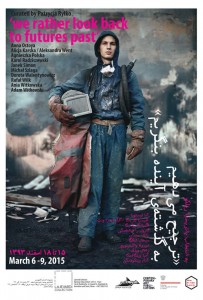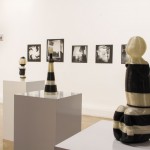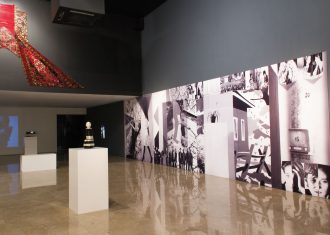
Exhibition: ‘we rather look back to futures past’ | 6-11 MAR 2015
Lajevardi Collection and Polish Embassy in Tehran present
‘we rather look back to futures past’
Exhibition Curated by Patrycja Ryłko
featuring works by
Anna Ostoya, Alicja Karska / Aleksandra Went, Agnieszka Polska,
Karol Radziszewski, Janek Simon, Michał Szlaga, Dorota Walentynowicz,
Rafał Wilk & Ania Witkowska
There is a recent inclination to look back to the past, treating it as a multi-faceted construct of limitless scope and possibility. Still there remain the questions: when do the happenings of the timeless and suspended past start to become fragmented into particular arrangements recorded and remembered? And who will define them? How do we in actuality experience the past and history – is it through a continual need for memory creation? When does the past begin to become history?
This exhibition presents five contemporary artists whose works relate to these questions in differing ways. These artworks do not refer to the past as something static, but are rather based on the artist’s subjective or collective affiliations, desires, fears, and influences, shaped by images and stories which come to mind in the present. Thus they seem to refer to the history made out of the past, a history which is not fixed, but operates as a very present active subject, that at any time here and now can be re-explored, revisited and newly reviewed. The artists are actively retelling, redefining, and re-negotiating meanings, within an ever-changing context of the present.
They look for the verges, where points of reference and diverse narrations proliferate, where dynamics has no specific and single direction, and where stories overlap. They focus on nuance.
By using diverse forms of artistic utterance, the artists create subjective differences of history. They present readings of artistic narratives that have come down to us – the way they were created and shaped, as well as the ways they came to be distributed. The artists look back to how particular histories have been constructed, and by which means they are preserved, focussing not on the reconstruction of particular narratives, but rather, offering alternate readings of them, while opening up an active space in which these narratives live among us.

